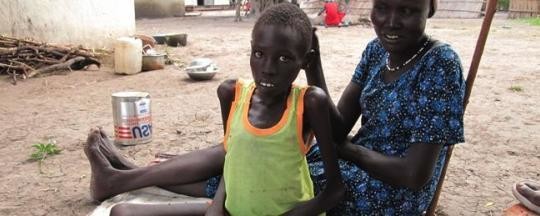Health authorities in South Sudan are collaboratively stepping up preventing measures to contain the increase in the number of cases of visceral leishmaniasis, commonly known as kala-azar in Upper Nile region.
Gogrial State health minister Angui Mayuot described the disease in an interview on Friday as a tropical, parasitic disease transmitted through bites from certain types of sand flies and is endemic in some parts of Western Bahr el Ghazal, Lakes, Western Equatoria, Jonglei and Upper Nile.
“There has been a concerted effort to try to contain the spread of the disease. The national ministry of health is collaboratively working with our health partners to ensure preventive measures are increased, especially in the affected areas. The efforts have now been jointly stepped up with our partners to help prevent the escalation of the disease”, explained Angui
Angui, who studied tropic diseases and medicines, confirmed receiving reports circulated by the United Nations office for coordination of humanitarian affairs to the partners, highlighting the number of challenges and disease with which they are grappling to address after the break out of military hostilities at presidential palace in Juba in July, leading to displacement of many people in search of safety.
The UNOCHA report explained that partners have dispatched medical supplies and trained community volunteers on managing cases. It also added that mosquito nets and other relief items are being delivered to affected areas but pointed out security challenges are hindering efforts aimed at reaching out to suspected areas.
“As a result of insecurity and operational challenges at health facilities, there continues to be under reporting of diseases and illness across the country”, the report reads in part.
So far this year, it added, 1,163 cases and 42 deaths (case fatality rate of 3.6 per cent) have been reported from 18 treatment centres. The majority were from Lankien (467), followed by Old Fangak (276), Melut (68), Kurwai (64), and Ulang (42). Suspected cases have also been reported in Baliet and Adong in Upper Nile. Males account for 56.5 per cent of the cases, while the worst affected age groups are 5 to 14 year olds (36.7 per cent of cases) and those aged 15 years and above (35.9 per cent of cases).
It further added that although the overall number of cases reported to date in 2016 is lower than at the same time in 2015 (1,163 vs 2,560 respectively), since the beginning of July 2016, the numbers of weekly cases has been substantially higher than those reported during the corresponding period in 2015. Cholera, malaria and kala-azar continue to be major causes of death in the country.
Minister Angui earlier explained that the parasite is spread to humans through the bite of infected female sand flies, which attacks the immune system, and is almost always fatal if not treated.
“Kala azar is caused by bites from female phlebotomine sandflies—the vector of the leishmania parasite. The sand flies feed on animals and humans for blood, which they need for developing their eggs. If blood containing leishmania parasites is drawn from an animal or human, the next person to receive a bite will then become infected and develop leishmaniasis. Months after this initial infection the disease can progress into a more severe form, called visceral leishmaniasis or kala azar.Initially, leishmania parasites cause skin sores or ulcers at the site of the bite. If the disease progresses, it attacks the immune system”, he explained.
Kala azar, he added, presents after two to eight months with more generalized symptoms including prolonged fever and weakness. The most effective diagnostic tests for leishmaniasis are invasive and potentially dangerous, where tissue samples are required from the spleen, lymph nodes, or bone marrow. These tests require lab facilities and specialists not readily available in resource-poor, endemic areas. The most common method of diagnosing kala azar is by dipstick testing. However, this method is highly problematic. In endemic areas, people can become infected with kala azar but it may not develop into the disease. Therefore, no treatment will be required.
He continued: “There are also different treatment options available for kala azar, with varying effectiveness and side effects. Pentavalent antimonials are usually the first line group of drugs, given as a 30 day course of intramuscular injections. While antimonials are quite toxic and present a risk to patients receiving treatment, those who are cured for kala azar almost always develop immunity for life. Researchers hope to identify ways to simplify treatment regimes, improve their safety, and reduce the risk of drug resistance”.
File photo: A child suffering from Kala Azar in Ayod (Medair)




